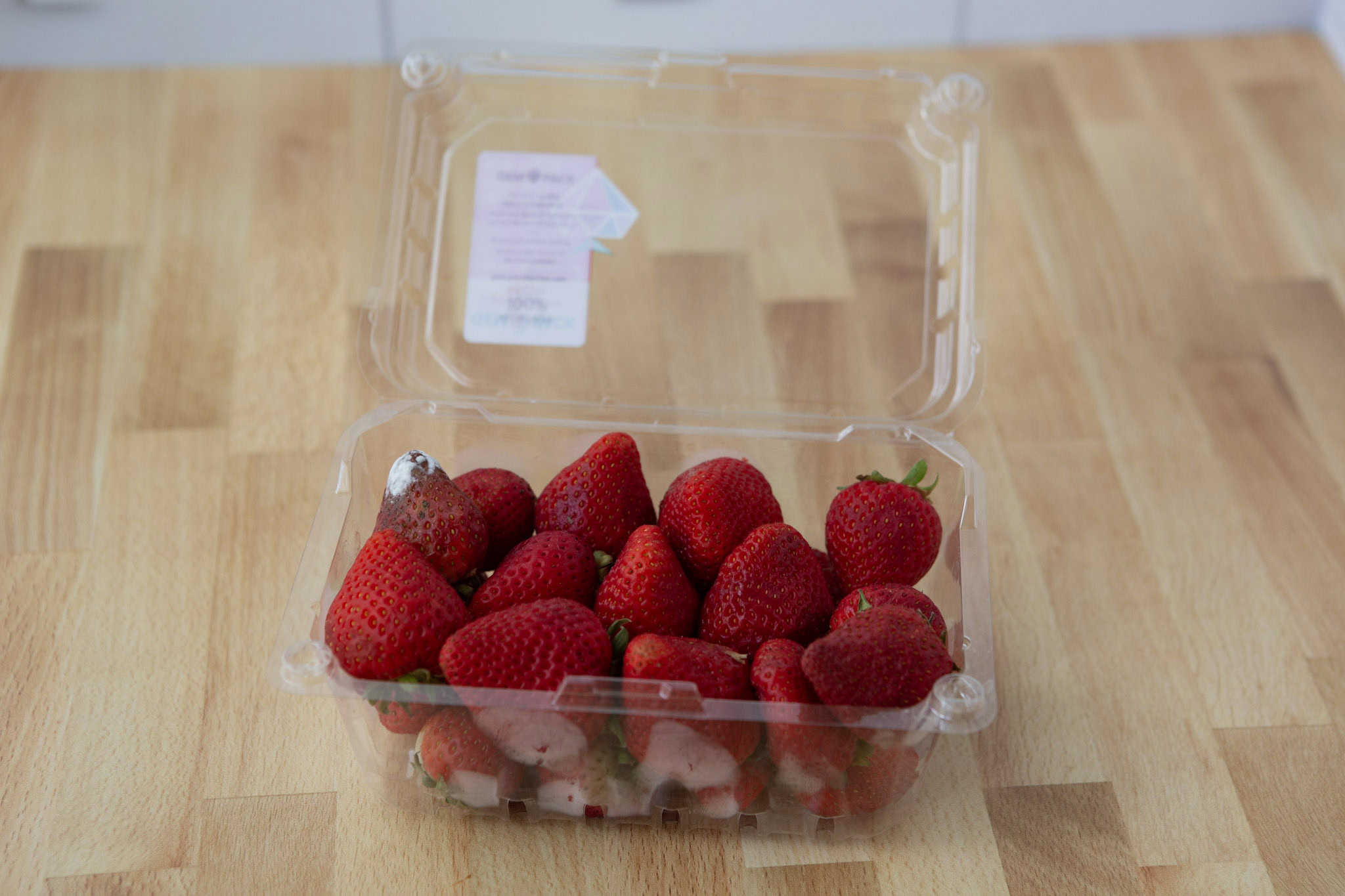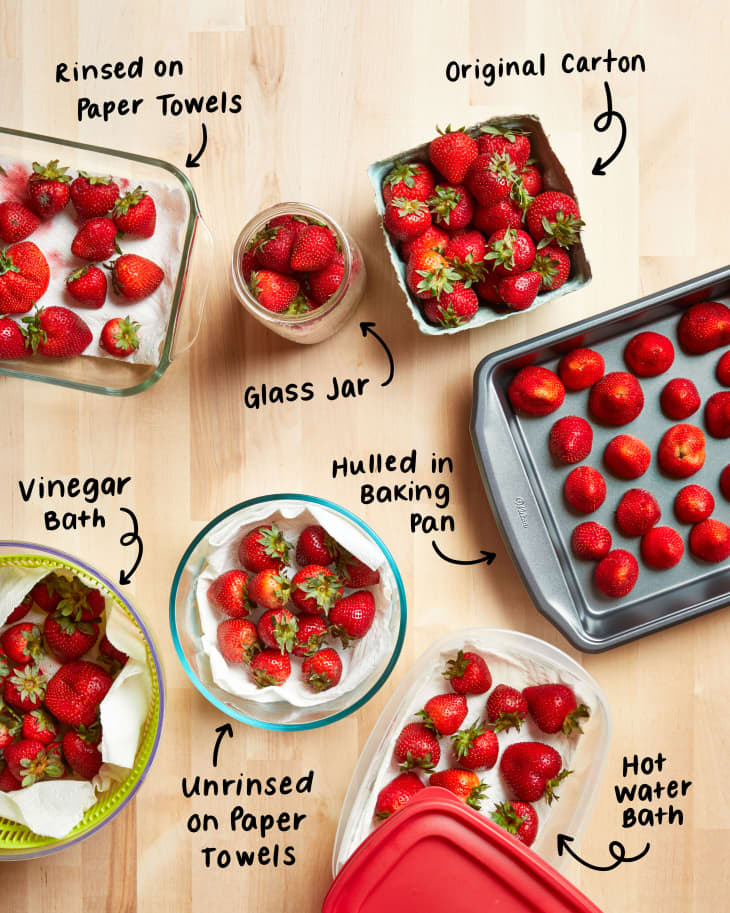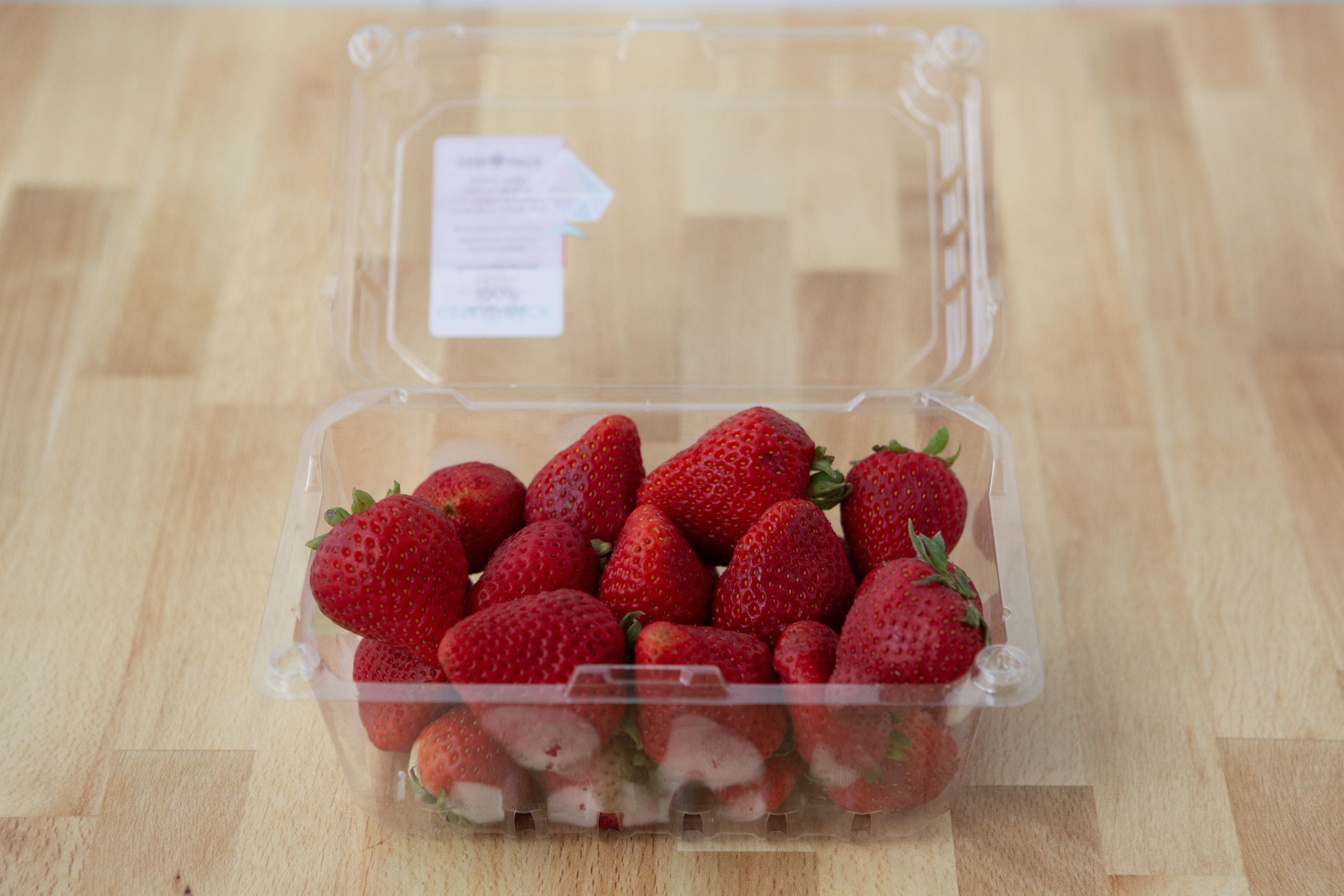Recognize When Strawberries Are Bad And How Long They Stay Fresh: Expert Tips
Strawberries are a delicious treat, but they don’t stay fresh forever. Knowing when they’re bad can save you from an unpleasant surprise.
Fresh strawberries are a delight in any season, but they have a limited shelf life. Whether you buy them from a store or pick them yourself, it’s essential to recognize the signs of spoilage. This knowledge helps ensure you enjoy their sweet flavor at its peak.
In this post, we’ll guide you on how to spot rotten strawberries and how long they typically stay fresh. Stay tuned to keep your strawberries tasting tremendous and avoid the disappointment of spoiled fruit.

Credit: jennabraddock.com
Identifying Fresh Strawberries
Identifying fresh strawberries can be pretty simple if you know what to look for. Fresh strawberries not only taste better, but they also last longer. Here are some tips to help you recognize fresh strawberries.
Appearance
Fresh strawberries have a bright red color. The more decadent the red, the riper the strawberry. Avoid strawberries with white or green patches, as they are not fully ripe.
Also, look at the seeds. Fresh strawberries have seeds that are evenly spaced and slightly raised. If the seeds appear sunken or discolored, the strawberries might be past their prime.
The leaves on top should be green and fresh-looking. Wilted or brown leaves indicate that the strawberries are not fresh.
Texture
Gently squeeze a strawberry. Fresh strawberries are firm but not hard. They should have a slight give. If they feel mushy or soft, they are likely overripe.
Check the surface of the strawberries. They should be smooth and shiny. Avoid strawberries with a dull appearance or those that have visible bruises or mold.
Lastly, fresh strawberries have a fragrant smell. If you can’t smell anything, they might not be fresh.
| Characteristic | Fresh Strawberries | Bad Strawberries |
|---|---|---|
| Color | Bright red | White/green patches |
| Seeds | Evenly spaced, slightly raised | Sunken, discolored |
| Leaves | Green and fresh | Wilted or brown |
| Firmness | A firm with a slight give | Soft or mushy |
| Surface | Smooth and shiny | Dull, bruised, moldy |
| Smell | Fragrant | No smell |
Signs Of Spoiled Strawberries
Recognizing when strawberries are no longer fresh can save you from eating spoiled fruit. Fresh strawberries have a sweet aroma and vibrant red color. Over time, strawberries can spoil and show signs of decay. Knowing these signs will help you keep your fruit fresh longer.
Color Changes
Fresh strawberries are bright red. When they begin to spoil, their color fades. They may turn a dull shade of red or even brown. Check the berries for any dark spots. These spots indicate the fruit is losing its freshness.
Mold Presence
Mold is a clear sign of spoiled strawberries. Look for white or green fuzzy spots on the berries. Mold spreads quickly, so remove any affected strawberries immediately. Moldy strawberries can make you sick if eaten.
Shelf Life Of Strawberries
Strawberries are a delicious fruit enjoyed by many. But knowing how long they stay fresh is crucial. Proper storage can extend their shelf life. This guide will help you understand how to store strawberries. It also covers how long they stay fresh at room temperature and in the refrigerator.
Room Temperature
Strawberries do not last long at room temperature. They can spoil quickly. Here is a breakdown of their shelf life:
- Fresh strawberries: 1-2 days
- Cut strawberries: Less than a day
Always check for signs of spoilage. Look for mold, mushy spots, and a bad smell. If you see any of these, discard the strawberries. To maximize their freshness, store them in a cool, dry place. Avoid direct sunlight and moisture.
Refrigeration
Refrigeration extends the shelf life of strawberries. Here’s how long they can last in the fridge:
- Whole strawberries: 5-7 days
- Cut strawberries: 1-3 days
To store them properly in the fridge, follow these steps:
- Please do not wash them before storing them. Moisture speeds up spoilage.
- Please place them in a shallow container lined with paper towels.
- Cover the container loosely with plastic wrap.
Check them daily for signs of spoilage. Discard any bad strawberries to prevent others from spoiling. Using these tips, you can keep your strawberries fresh for longer.
:max_bytes(150000):strip_icc()/SL-how-to-freeze-strawberries-courtney-west-01-2000-c9ab413a36644c7f82c1b89b825c8747.jpg)
Credit: www.southernliving.com
Factors Affecting Freshness
Strawberries are delicious and nutritious. But their freshness can fade quickly. Understanding the factors that affect their freshness can help you enjoy them longer. Let’s dive into these key factors.
Storage Conditions
Storage plays a huge role in how long strawberries stay fresh. Could you keep them in the fridge? Cold temperatures slow down spoilage. Use a container with vents. This allows air to circulate. Avoid storing strawberries in the crisper drawer. It has high humidity, which can cause mold.
Don’t wash strawberries before storing them. Moisture can speed up spoilage. Instead, wash them right before eating. Use a paper towel to absorb any excess water.
Handling Practices
How you handle strawberries affects their freshness. Handle them gently. They bruise easily. Bruises can lead to faster spoilage. Pick through the strawberries before storing them. Remove any that are moldy or damaged. One sour berry can ruin the whole batch.
Keep strawberries dry. Excess moisture can cause mold. If you need to wash them, make sure they are scorched before storing them. Use a paper towel to pat them dry.
Proper Storage Techniques
Proper storage techniques are essential to keep your strawberries fresh and tasty. Poor storage can lead to mold, spoilage, and loss of flavor. By using the proper methods, you can extend the life of your strawberries.
Fridge Storage
Store strawberries in the fridge to keep them fresh. Use a shallow container lined with paper towels. The paper towels absorb excess moisture. Spread the strawberries in a single layer. This prevents them from getting squished.
Please do not wash the strawberries before storing them. Moisture accelerates spoilage. Instead, wash them just before eating. Check the strawberries daily. Remove any that show signs of mold or spoilage. This helps keep the rest fresh.
Freezer Storage
For more extended storage, freeze your strawberries. First, wash and dry the berries thoroughly. Remove the stems and leaves. Place the strawberries on a baking sheet in a single layer. Freeze them until solid, usually a few hours.
Transfer the frozen strawberries to a freezer-safe bag or container. Remove as much air as possible. Label the container with the date. Frozen strawberries can last up to a year. Use them in smoothies, desserts, or as a snack.

Credit: www.thekitchn.com
Extending Strawberry Freshness
Strawberries are a delicious and nutritious fruit. They can spoil quickly if not handled properly. Knowing how to keep them fresh can save you time and money. Here are some tips to help extend their freshness.
Washing Tips
Proper washing is crucial to keep strawberries fresh.
- Avoid washing strawberries until you are ready to eat them. Moisture speeds up spoilage.
- When washing, use cold water and gently rinse them.
- Avoid soaking them, as this can make them mushy and promote mold growth.
After washing, dry them thoroughly with a paper towel. This helps remove any excess moisture.
Packaging Methods
Packaging plays a significant role in preserving strawberries.
- Store them in a breathable container. Avoid airtight containers, which can trap moisture.
- Line the container with a paper towel. This absorbs extra moisture and keeps the berries dry.
- Keep the strawberries in the refrigerator. Cold temperatures slow down spoilage.
If you have a lot of strawberries, consider freezing them. Freezing can extend their shelf life for months.
Here is a simple table summarizing these tips:
| Tip | Description |
|---|---|
| Washing | Rinse gently with cold water, avoid soaking, and dry thoroughly. |
| Packaging | Use breathable containers, line them with paper towels, and refrigerate. |
| Freezing | Freeze for long-term storage. |
By following these tips, you can enjoy fresh strawberries for a longer time.
Using Overripe Strawberries
Strawberries are a delicious and versatile fruit. Sometimes, they become overripe before you can use them. But don’t throw them away! Overripe strawberries still have many uses. They can add flavor and sweetness to various dishes and treats. Let’s explore how to use them in your kitchen.
Culinary Uses
Overripe strawberries are perfect for smoothies. Blend them with yogurt or milk for a tasty drink. They are also great for baking. Add them to muffins, cakes, or bread for extra sweetness. You can make a quick strawberry sauce. Just cook them with a bit of sugar and lemon juice.
Overripe strawberries work well in jams and jellies. Their sweetness and softness are ideal for spreading on toast. You can also use them in salads. They add a burst of flavor to your greens. Overripe strawberries can enhance your desserts, too. Top your ice cream or yogurt with them for a fruity touch.
Preservation Methods
There are ways to preserve overripe strawberries. Freezing is a simple method. Wash and dry the strawberries first. Then, place them on a tray in the freezer. Once frozen, store them in a sealed bag. You can use them later in smoothies or baking.
Another method is drying. Slice the strawberries and place them in a food dehydrator. They will become sweet, chewy snacks. You can also make strawberry puree. Blend the overripe strawberries until smooth. Freeze the puree in ice cube trays. Use the cubes in drinks or recipes.
Consider canning your overripe strawberries. Make a strawberry jam or preserve it. Store the jars in a cool, dark place. They will last for months and be ready to enjoy anytime.
Expert Tips For Buying Strawberries
Buying strawberries can be tricky. You want the freshest, tastiest berries. Follow these expert tips to make sure you get the best strawberries every time.
Selecting Quality
Inspect the strawberries before buying. Look for a bright red color. This indicates ripeness. Avoid berries with white or green patches. They are not fully ripe.
- Firmness: Gently squeeze the berries. They should be firm, not mushy.
- Aroma: Smell the strawberries. A sweet aroma means they are fresh.
- Green caps: Check the green caps. They should be fresh and intact.
Examine the container. Look for mold or moisture. This could mean the berries are spoiling.
Seasonal Considerations
Strawberries have peak seasons. The best time to buy is spring and summer. Berries are at their sweetest then.
| Season | Strawberry Quality |
|---|---|
| Spring | Best quality, sweet and juicy |
| Summer | Excellent quality, very sweet |
| Fall | Good quality, less sweet |
| Winter | Fair quality, less flavor |
Buying in season helps ensure freshness. Off-season berries may be bland or less ripe.
Frequently Asked Questions
How Can You Tell If Strawberries Are Bad?
Rotten strawberries have mold, dark spots, or a mushy texture. They may also smell off. Check before eating.
How Long Do Strawberries Stay Fresh In The Fridge?
Strawberries stay fresh for about 5-7 days in the fridge. Store them in a dry container.
Can You Eat Strawberries With Soft Spots?
No, avoid eating strawberries with soft spots. Soft spots indicate spoilage. Always check for freshness before eating.
Conclusion
Strawberries are a delicious treat but spoil quickly. Recognize rotten strawberries by their softness, mold, or dark spots. They generally stay fresh for about five to seven days in the fridge. Store them properly to extend their shelf life. Enjoy your strawberries while they are fresh and delicious.
By following these tips, you can enjoy strawberries at their best. Remember, freshness is key to enjoying this sweet fruit. Thank you for reading, and happy strawberry picking!

